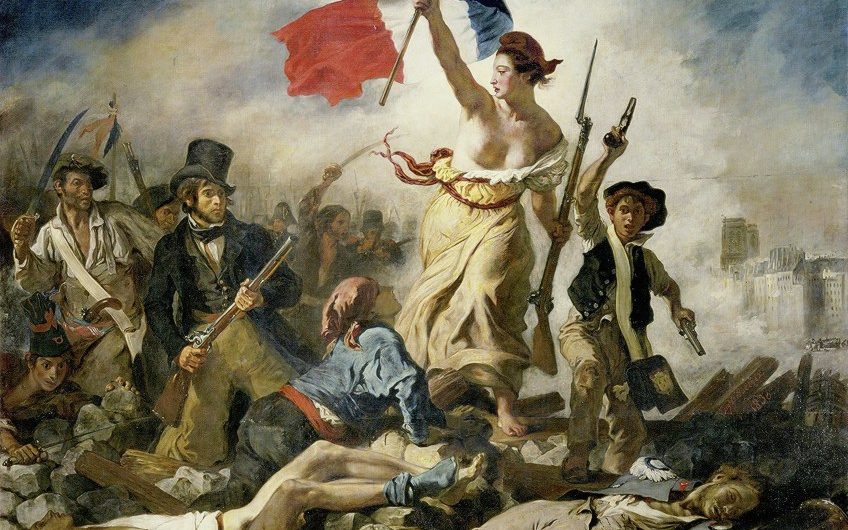Unit 4 Overview: Later Europe and Americas, 1750-1980 CE
4 min read•june 18, 2024
Charly Castillo
Laurie Accede
AP Art History 🖼
34 resourcesSee Units
We've finally made it to Unit 4, the longest section of the entire AP Art History course. Even though it may seem intimidating at first, Unit 4 is an art history student's dream because it has a little bit of everything: from Greco-Roman inspired works 🏛️, to modernist architecture, to experimental paintings that test the limits of art.
As with every unit, we'll get to see how different historical events and social problems from 1750 to 1980 have influenced the art made in each period (and even the works of today). We'll also get to see artists in each movement break traditional rules by depicting subjects that have never been painted before, creating new techniques, employing newly invented media, and exposing issues that have historically been ignored. So, now that you're all excited to learn about Unit 4, let's get into the contextualization!
Contextualization (AKA The Historical Background)
As previously mentioned, this unit is the largest in the entire course, and has many different movements and historical events. Since would take a lot of time to go through each event, we choose to go over some of the main ones below, which will come up the most during this unit.
The Enlightenment (1715 – 1789) 💡
During the Enlightenment, philosophers and other intellectuals began having new perspectives on old ideas, and promoted skepticism, the study of science, and reason over superstition. There was a larger emphasis on individualism and secularism (separate from religion). The content of artwork began to change since artists were no longer restricted to only religious forms. The Enlightenment also saw a renewed interest in classical art and architecture, as well as a growing appreciation for the natural world. This laid the foundation for a rise in many new artistic movements and forms.
French Revolution (1789-1799)
The French Revolution was led by people who were revolting against the unfair treatment of the Third Estate (everyday people) by the government, constant food shortages, and economic hardship after fighting in the American Revolution.
Many paintings had political messages about the events that were occurring, with symbolism expressing political beliefs (see Liberty Leading the People). The French Revolution was followed by artistic movements like Romanticism, which focused on emotion and expressed the sublime (anything that makes its viewers look in awe 😱).

Liberty Leading the People. Image Courtesy of: Art in Context
Publishing of the Communist Manifesto (1848)
After the Communist Manifesto was published, people began to realize the issues of living in a capitalist society, which led to revolutions, protests and uprisings, and assassinations of socialists across Europe (see Memorial Sheet of Karl Liebknecht).
Revolutions of 1848
The Revolutions of 1848 were spearheaded by three changes in Europe: the rising popularity of nationalist movements (ones that support the creation of nations based on ethnicity), the spread of liberalism, and inadequate ruling by monarchs.
Perry Expedition and the Forced Opening of Japan (1853-1868)
The Perry Expedition went to Japan and forced the nation to open its borders, rather than remain sheltered and only allow trade with certain nations. This allowed for the spread of Japanese culture, including art, around the world. These traditional forms and motifs became infused with western techniques to form a new artistic style known as Japonisme (see The Coiffure).
World Wars I and II (1914-1945)
Both World Wars I and II had drastic effects on economies, populations, and the environment around the world. Similar to the other wars that have occurred across history, WWI and WWII art include messages about the political and social environment. WWI specifically led to artistic movements like Surrealism (abstract form meant to puzzle the viewer) and Expressionism (expressed the artists' inner feelings).
The Harlem Renaissance (1920s-1930s) 🎶
During the early decades of the 1900s, African Americans from the South began migrating to cities in the North, which led to an artistic and cultural movement now known as the Harlem Renaissance. Most paintings from this artistic movement have themes like race, civil rights, and segregation. There was also a renewed interest in African art forms. In general, the Harlem Renaissance provided a platform for African-American artists to showcase their art and cultural heritage.
Influence of Pop Culture (1950s-Present) 💄
Pop culture continues to influence artistic works. Beauty standards, the concept of "femininity," celebrities like Marilyn Monroe, and protests against the Vietnam War have all inspired works made in this unit.
Browse Study Guides By Unit
🗿Unit 1 – Global Prehistoric Art, 30,000-500 BCE
🏛Unit 2 – Ancient Mediterranean Art, 3500-300 BCE
⛪️Unit 3 – Early European and Colonial American Art, 200-1750 CE
⚔️Unit 4 – Later European and American Art, 1750-1980 CE
🌽Unit 5 – Indigenous American Art, 1000 BCE-1980 CE
⚱️Unit 6 – African Art, 1100-1980 CE
🕌Unit 7 – West and Central Asian Art, 500 BCE-1980 CE
🛕Unit 8 – South, East, and Southeast Asian Art, 300 BCE-1980 CE
🐚Unit 9: The Pacific, 700–1980 ce
🏢Unit 10 – Global Contemporary Art, 1980 CE to Present
📚Study Tools

Fiveable
Resources
© 2025 Fiveable Inc. All rights reserved.